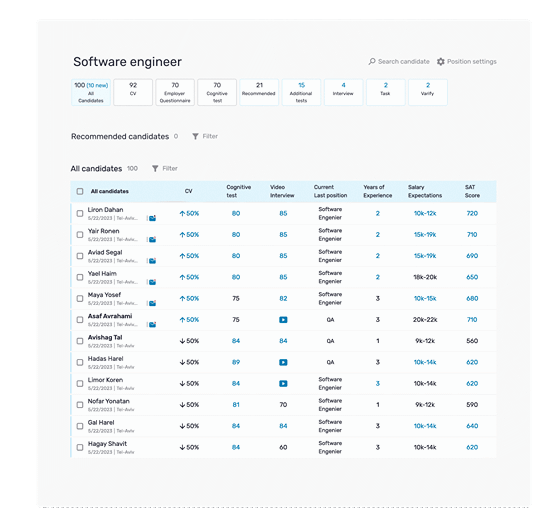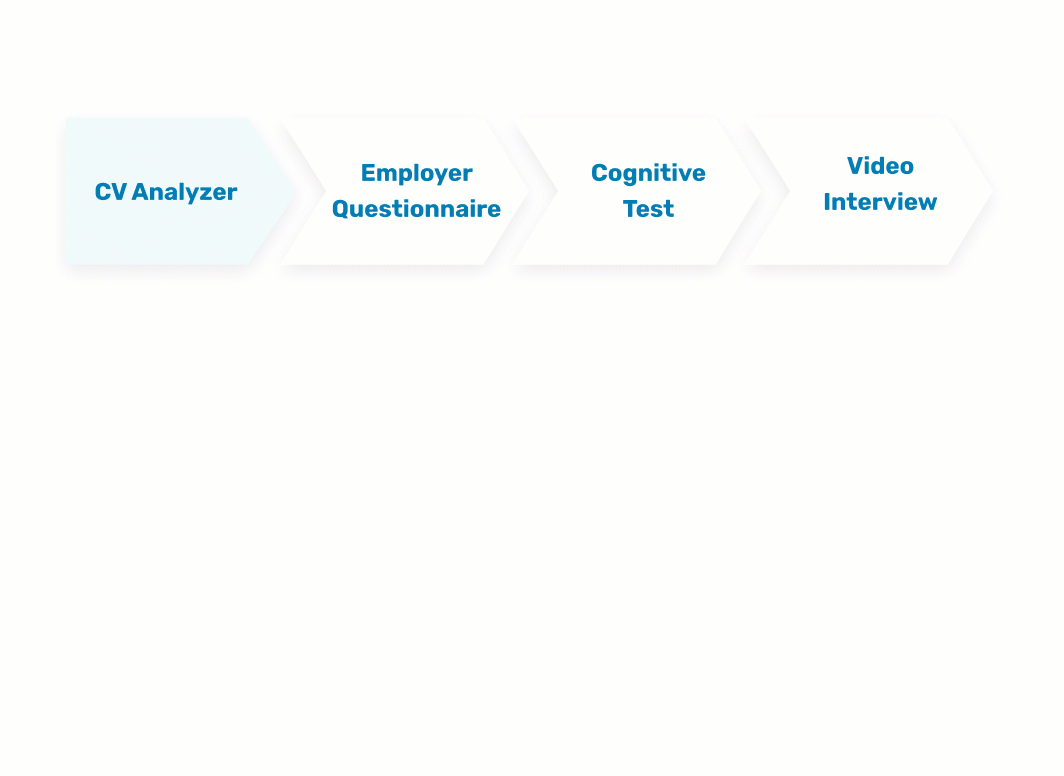In a highly competitive job market, organisations must adopt efficient tools to refine their hiring process and secure the best talent. Candidate tracking systems have emerged as a transformative strategy in recruitment, offering significant benefits in how companies attract, engage, and retain candidates. Organisations can streamline their hiring processes, improve candidate experiences, and ultimately build stronger, more dynamic teams by utilising candidate tracking systems.
Understanding Candidate Tracking Systems
A candidate tracking system is a type of software designed to manage and optimise the recruitment process. Integrated with applicant tracking systems (ATS) and CRM features, these systems centralise candidate information, monitor interactions, and automate tasks such as job postings, interview scheduling, and resume parsing. By utilising this technology, hiring managers can enhance the candidate experience while maintaining efficiency.
ATS vs. CRM: Choosing the Right Tool
An Applicant Tracking System (ATS) and a Candidate Relationship Management (CRM) system serve distinct but complementary roles in recruitment. An applicant tracking system ATS focuses on operational efficiencies, such as filtering resumes and scheduling interviews, ensuring a seamless hiring workflow. In contrast, a CRM supports talent acquisition teams by nurturing long-term candidate relationships, creating a robust talent pool for future hiring needs.
For businesses seeking a highly customizable solution, many applicant tracking systems work with built-in CRM capabilities to provide a comprehensive platform.
Key Benefits of Candidate Tracking Systems
1. Automated Resume Screening
Automate tasks like resume parsing and candidate screening, reducing human error and improving efficiency.
2. Centralised Candidate Database
Store and organise candidate information in one platform, allowing recruitment teams to track progress and access profiles quickly.
3. Customisable Workflows
ATS allows for customising the recruitment process to suit specific organisational needs, from personalised job postings to automated email templates, boosting efficiency and adaptability.
4. Improved Candidate Communication
Use integrated tools for consistent communication, such as email templates for interview invites or follow-ups, ensuring a positive candidate experience.
5. Data-Driven Decisions
Generate custom reports with actionable insights into open roles, time-to-hire, and sourcing effectiveness, empowering hiring teams to optimise their strategies.
6. Scalability for All Sizes
Whether for small organizations, medium-sized businesses, or large enterprises, candidate tracking systems are scalable to suit diverse hiring needs.
Implementing Candidate Tracking Systems for Success
Developing Custom Strategy
Select the best applicant tracking systems by assessing specific needs like integration with existing HR tools and ease of use. Customise workflows to reflect your organisation’s hiring criteria.
Leverage Automation
Automate repetitive tasks like job postings across job boards and candidate sourcing to focus on strategic initiatives.
Engage and Retain Candidates
Build a strong talent pool through personalised communication and regular updates about new positions or company news.
Track Performance
Use features like time tracking and real-time analytics to identify bottlenecks in the recruitment process and improve efficiency.
Top Features of Candidate Tracking Systems
- Cloud-Based Platforms: Accessible anytime, anywhere, enabling seamless recruitment across locations.
- Mobile App Integration: Manage the hiring process on the go, ensuring continuous progress.
- Advanced Search: Quickly find specific candidates based on their skill set or job title.
- Onboarding Features: Transition new hires seamlessly with integrated workflows.
- Anonymized Screening: Reduce bias and promote diversity during candidate evaluations.
Case Studies: How Candidate Tracking Systems Transform Hiring
Many companies have successfully enhanced their hiring processes with ATS. Here are two examples:
- A leading retail company reduced its time-to-hire by 40% with automated interview scheduling and resume screening.
- A mid-sized tech firm enhanced its candidate experience by leveraging a user-friendly interface for clear communication and timely updates.
Best Practices for Candidate Tracking Implementation
- Train Recruitment Teams: Ensure HR professionals and hiring managers are proficient in using the system’s features, including customizable workflows and reporting tools.
- Evaluate and Adapt: Regularly review system performance, gather feedback, and update strategies to align with industry trends.
Embrace the Power of Candidate Tracking Systems
A candidate tracking system is a game-changer for organisations looking to streamline their hiring process, attract top candidates, and maintain a competitive edge. With features like applicant tracking, custom workflows, and actionable insights, these systems empower businesses to meet their recruitment goals effectively and efficiently.
Cut to the Chase: Why Our Candidate Tracking System Stands Out
We have outlined the numerous benefits of an ATS for enhancing your hiring process and improving your candidate tracking. Now, it's time to implement these benefits for your recruitment process.
Introducing AI Recruitment – The Noam Institute’s ATS is designed to elevate your organisation's hiring experience for both recruiters and candidates. How does it work?
- Identify Top Candidates Quickly: Access precise, rapid data to pinpoint the best candidates even before making the first phone call.
- Centralised Recruitment Management: Post job openings across relevant platforms with a single click and gain an up-to-date overview of all recruitment activities through the dashboard. Recruiters, department managers, and team leaders can access candidate details, test results, reviews, and recommendations, add their impressions, and track progress in real-time.
- Improve Candidate Experience: Offer candidates a smooth and upgraded screening process with complete transparency about their status. This minimises the risk of losing top candidates or letting them slip through the cracks and makes your recruitment process a well-organized, pleasant, and inviting representation of your organisation.
- Elevate Recruitment Efficiency: Integrate advanced features like automated screening stages, AI-powered CV analysis, personalised cognitive assessments, and top candidate ranking to achieve better results in less time.


FAQs
An Applicant Tracking System (ATS) is a software tool used by organizations to manage and streamline the recruitment and hiring process. It is designed to handle various tasks related to attracting, screening, and selecting candidates for job openings. The ATS is a central hub for all recruitment activities, making it easier for HR professionals and recruiters to organize and track candidates throughout the hiring process.
Essential Functions of an ATS:
1. Job Posting and Distribution
2. Resume Collection and Management
3. Resume Screening and Filtering
4. Candidate Tracking
5. Communication with applicants and across teams
6. Reporting and Analytics
7. Compliance and Record-Keeping
A candidate tracker is a tool or feature, often found within an Applicant Tracking System (ATS), that helps recruiters and hiring managers monitor and manage the progress of job candidates throughout the recruitment process. It provides a centralized system to track each candidate's status, interactions, and movement through different stages of hiring, from application to offer or rejection.
An Applicant Tracking System (ATS) differs from a Customer Relationship Management (CRM) system. An ATS is specifically designed to manage the recruitment process, focusing on tracking job applicants and organizing their progress through the hiring stages. In contrast, a CRM manages customer relationships, focusing on sales, marketing, and customer service interactions. While both systems track interactions and automate processes, they serve different purposes—ATS for recruitment and CRM for customer management—though some platforms may integrate elements of both.



